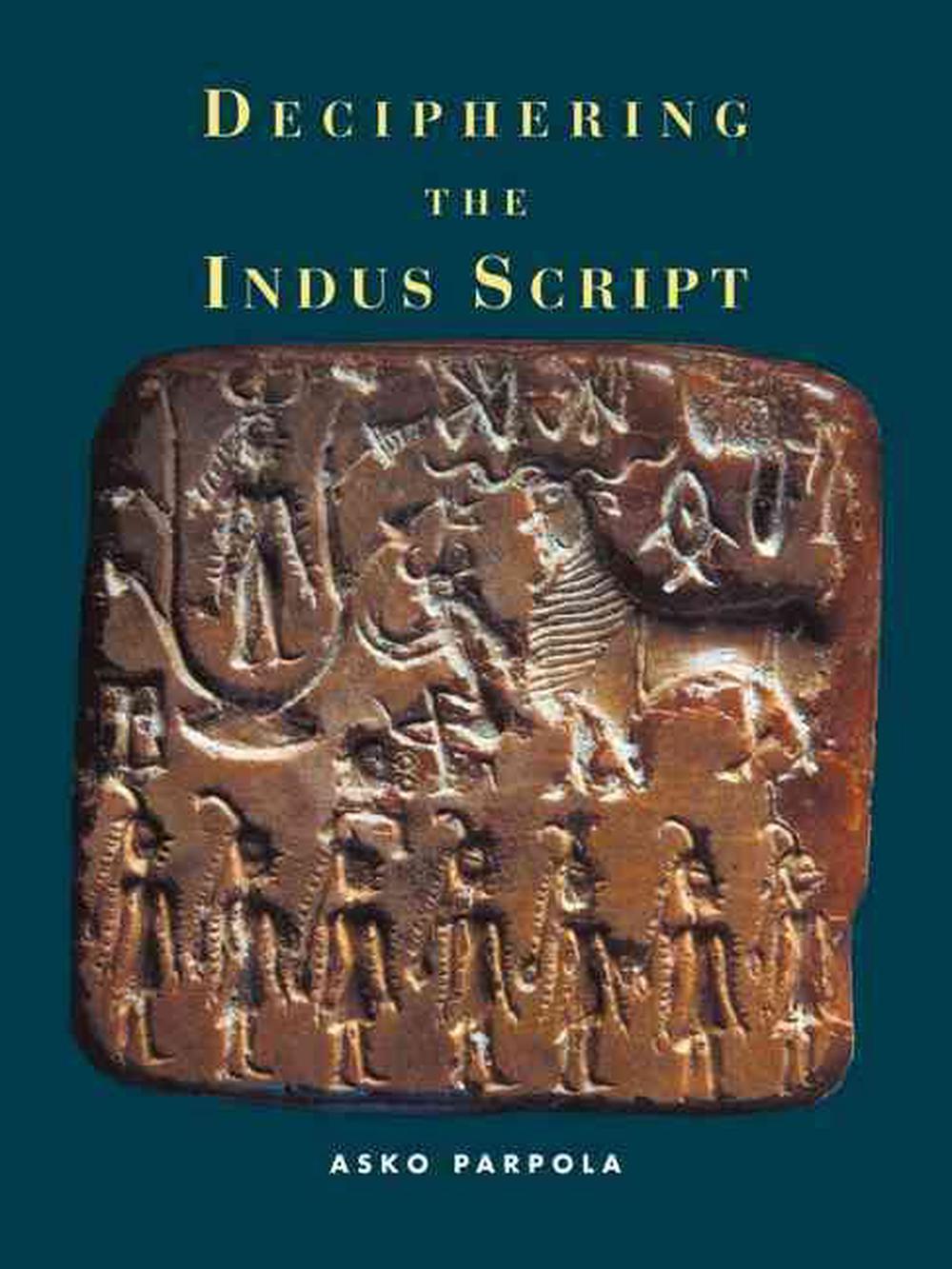
Deciphering the Indus Script
by Asko Parpola
Professor Parpola outlines what is known about the Harappan culture and its script, deciphers a small number of interlocking Indus signs, and proposes a method which will permit further progress in decipherment.
Paperback
English
Brand New
Publisher Description
Of the writing systems of the ancient world which still await deciphering, the Indus script is the most important. It developed in the Indus or Harappan Civilization, which flourished c. 2500-1900 BC in and around modern Pakistan, collapsing before the earliest historical records of South Asia were composed. Nearly 4,000 samples of the writing survive, mainly on stamp seals and amulets, but no translations. Professor Parpola is the chief editor of the Corpus of Indus Seals and Inscriptions. His ideas about the script, the linguistic affinity of the Harappan language, and the nature of the Indus religion are informed by a remarkable command of Aryan, Dravidian, and Mesopotamian sources, archaeological materials, and linguistic methodology. He outlines what is known about the Harappan culture and its script, presents a decipherment of a small number of interlocking Indus signs, and proposes a method which will permit further progress in decipherment. His fascinating study confirms that the Indus script was logo-syllabic, and that the Indus language belonged to the Dravidian family.He also argues that Indian astronomy was started by the Harappans, and that the Indus religion was genetically related to those of the ancient Near East and Hindu India.
Table of Contents
Part I. Introduction: 1. The Indus Civilization and its historical context; Part II. The Indus Script: 2. Early writing systems; 3. Deciphering an unknown script; 4. Approaches to the Indus script; 5. Internal evidence for the type of script used in the Indus Valley; 6. Internal evidence on the structure of the Indus language; 7. External clues to the Indus script; Part III. The Linguistic Context: 8. In search of the Indus language; 9. Dravidian languages and the Harappan culture; Part IV. Interpretations of Indus Pictograms: 10. The 'fish' signs of the Indus script; 11. The astronomical and astrological background; 12. The trefoil motif: further evidence for astral religion; 13. Evidence for Harappan worship of the god Muruku; 14. Evidence for Harappan worship of the Goddess; 15. Epilogue; Appendix; Bibliographical notes; References; Index.
Review
'This book is substantial, in every sense of the word … does make a forceful case for a partial decipherment … it will become the standard reference work and the basis for any further debate.' Stuart Blackburn, South Asia Research
'… deserves much credit for having pursued this enquiry to the very limits of what is now possible.' John Chadwick, The Times Higher Education Supplement
'… indispensable research tool … a book of lasting value.' Florian Coulmas, Language
'The best informed, most cogently argued, and important work to date on the Indus script.' Richard Salomon, Journal of the American Oriental Society
'By far the most comprehensive and well researched study of the Indus script … It will certainly remain a classic source book for many years to come.' Jonathan Mark Kenoyer, American Anthropologist
'… doubtless the most important study of the Indus script …' Thomas Oberlies, Bulletin of the School of Oriental and African Studies
'… most complete and best-informed treatment of the subject.' Michael D. Coe, Antiquity
Promotional
This fascinating study confirms that the Indus script was logo-syllabic and that the Indus language belonged to the Dravidian family.
Long Description
Le philosophe parle de phenomenes et de noumenes. Pourquoi ne donnerait-il pas son attention a l'etre du livre, au bibliomene? Cette suggestion de Gaston Bachelard est ici reprise et prolongee. Voue aux fondations, le present ouvrage dresse une correspondance entre textualite et interrogativite, assez puissante pour indexer les modalites du pensable sur les grands types de textes, de la science a la theologie et a la poesie. L'auteur s'adresse a ceux qui ecrivent des textes. Comme a ceux qui s'interrogent sur leur dimension essentielle pour la culture et sa transmission. L'intervention d'une philosophie du texte est opportune dans le concert des disciplines objectivantes. Elle introduit une idee neuve en philosophie: la positivite du texte. Il lui revient, comme naguere a la philosophie du langage, de conquerir le niveau fondamental du probleme et d'en redeployer les dimensions oubliees: le tournant textuel etend le pensable au textualisable, au lieu de le limiter au dicible. Il fait du texte un terme theoriquement marque pour la pensee elle-meme, plutot que discours , et interpretation , dont les concepts sont derives. Exigeante textualite: les conditions de la signifiance se retrouvent comme criteres de plenitude des grands textes ou de deficience des textes triviaux. Une logique de la typicalite prevoit des prototypes et des cas limites, des hybrides et des interfaces. La critique propose leur evaluation, diagnostique la troncature des sous-textes ou des non-textes. Elle differencie la pensee au sein du texte, le travail dans l'oeuvre, une proposition d'existence grace au livre, l'education meme du vivre par Le Livre.
Review Quote
'This book is substantial, in every sense of the word … does make a forceful case for a partial decipherment … it will become the standard reference work and the basis for any further debate.' Stuart Blackburn, South Asia Research
Promotional "Headline"
This fascinating study confirms that the Indus script was logo-syllabic and that the Indus language belonged to the Dravidian family.
Description for Bookstore
The Indus script developed in the Indus or Harappan Civilization, which flourished around 2500-1900 BC in what is now modern Pakistan. In this fascinating study, Professor Parpola outlines what is known about the Harappan culture and its script and proposes a method which will permit further progress in decipherment.
Description for Library
The Indus script developed in the Indus or Harappan Civilization, which flourished around 2500-1900 BC in what is now modern Pakistan. In this fascinating study, Professor Parpola outlines what is known about the Harappan culture and its script and proposes a method which will permit further progress in decipherment.
Details

